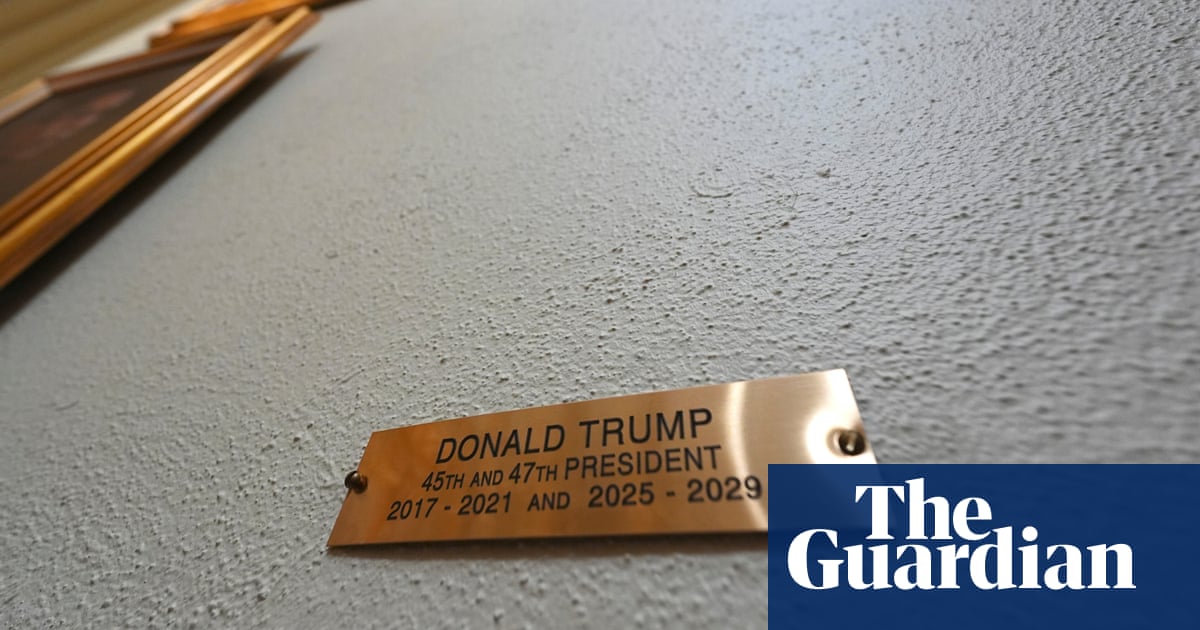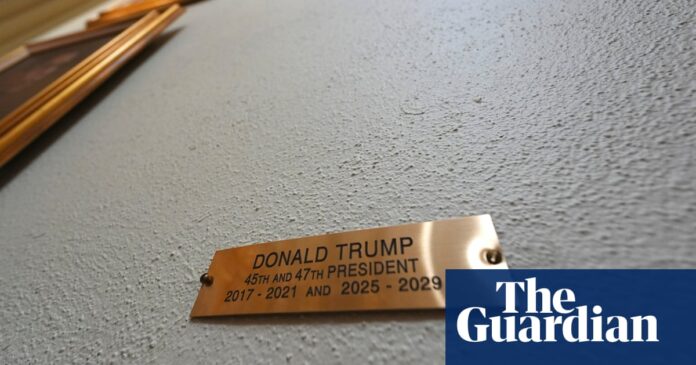A heated exchange between former US President Donald Trump and Colorado lawmakers has left a lasting impact on the state’s capitol building. In a shocking move, officials have decided to remove a portrait of Trump from the Colorado State Capitol, citing its “distorted” representation of the former president.

This controversy marks the latest flashpoint in a long-standing feud between Trump and the American public, with his combative personality and divisive rhetoric continuing to spark heated debates across the nation. The removal of Trump’s portrait is a significant gesture, reflecting the growing tensions between the former president’s supporters and those who have been critical of his policies and behavior.
Trump’s Portrait Removal: A Colorado Capitol Controversy
A portrait of Donald Trump, commissioned by Colorado Republicans and displayed at the state capitol since 2019, has been removed following the former president’s complaints about its depiction.
Background and Context
The oil painting, which was raised by Colorado Republicans with over $10,000 in funds, was intended to be a representation of Trump’s presidential term. Artist Sarah Boardman’s depiction of Trump was initially seen as non-confrontational and thoughtful by some, with the artist aiming to create a likeness that would stand the test of time.
However, Trump’s reaction to the portrait was far from positive. He took to his Truth Social platform to express his discontent, accusing the artist of creating a “purposefully distorted” portrait. Trump even compared it unfavorably to the portrait of his presidential predecessor, Barack Obama, which was also painted by Boardman.
The Removal and Politics Behind it
In response to Trump’s complaints, Colorado’s senate minority leader, Paul Lundeen, a Republican, requested that the portrait be removed and replaced with one that “depicts his contemporary likeness.” The Senate subsequently agreed to Lundeen’s request, and the portrait was taken down by Tuesday morning.
Democrats in the state legislature did not object to the removal, with a statement saying, “If the GOP wants to spend time and money on which portrait of Trump hangs in the capitol, then that’s up to them.” However, the Republicans have not disclosed how they plan to fund a new portrait or who might paint it.
Trump’s dissatisfaction with the portrait was not limited to its depiction. He also blamed Colorado’s governor, Jared Polis, a Democrat, for the painting, despite the fact that the presidential portraits are the purview of the Colorado building advisory committee.
This is not the first time the portrait of Trump has drawn attention. Before its installation, a prankster placed a picture of Russian dictator Vladimir Putin near the intended spot for Trump’s portrait, an act that drew attention to Trump’s widely perceived admiration for Putin.
Analysis and Implications
The removal of Trump’s portrait from the Colorado capitol has far-reaching implications that go beyond a simple portrait controversy. It reflects Trump’s sensitivity to his public image and how it is perceived by others.
Trump’s Sensitivity to Portraits
Trump’s reaction to the portrait is telling of his personality and public image. His sensitivity to how he is depicted in art is a reflection of his ego and desire for control. This is not the first time Trump has expressed discontent with a portrait of himself. In the past, he has been known to request changes to his depiction in various forms of media.
This sensitivity is also reflective of Trump’s authoritarian tendencies. By trying to control how he is depicted, Trump is attempting to exert control over the narrative surrounding his presidency. This is a hallmark of authoritarian leaders who often seek to manipulate public perception to their advantage.
The Role of Social Media in the Controversy
Social media played a significant role in amplifying the controversy surrounding Trump’s portrait. Trump’s complaints about the portrait on his Truth Social platform sparked a chain reaction of events that ultimately led to its removal. This highlights the power of social media in shaping public discourse and influencing public opinion.
In this case, social media provided Trump with a platform to air his grievances and exert influence over the narrative. It also allowed his followers to weigh in on the controversy, creating a sense of public outcry that pressured Colorado Republicans to take action.
Colorado’s Capitol Portraits and Their Significance
The presidential portraits at the Colorado capitol hold significant cultural and historical value. They represent a visual record of the state’s history and the presidents who have shaped its politics. The removal of Trump’s portrait has sparked a debate about the significance of these portraits and their role in reflecting the state’s history and politics.
The portraits are not just mere decorations; they are a symbol of the state’s connection to the federal government and its role in the country’s political landscape. By removing Trump’s portrait, Colorado Republicans are, in effect, rewriting the state’s history and erasing a part of its cultural heritage.
Practical and Future Implications
Portrait Replacement and Funding
The removal of Trump’s portrait raises practical questions about how Colorado Republicans will pay for a new portrait and who might paint it. The cost of commissioning a new portrait is likely to be significant, and it is unclear who will foot the bill.
This is not the first time Colorado Republicans have faced questions about funding for presidential portraits. In the past, they have relied on donations and fundraising efforts to cover the costs. However, the controversy surrounding Trump’s portrait has sparked a debate about the fairness of using public funds to commission portraits of politicians.
Future Portraits and Their Display
The controversy surrounding Trump’s portrait has sparked a debate about the future of presidential portraits at the Colorado capitol. It raises questions about how future portraits will be commissioned, funded, and displayed.
One possible outcome is that the Colorado capitol will adopt a more inclusive approach to commissioning portraits, one that takes into account the diversity of opinions and perspectives within the state. This could involve involving a broader range of stakeholders in the commissioning process, including artists, historians, and community leaders.
Trump’s Legacy and Public Perception
The removal of Trump’s portrait is likely to have implications for his legacy and public perception. It reflects a broader trend of reevaluating Trump’s presidency and its impact on American politics.
By removing the portrait, Colorado Republicans are, in effect, distancing themselves from Trump’s presidency and its controversies. This is a significant development, as it suggests that even Trump’s allies are beginning to question his legacy and its impact on the country.
Conclusion
Here is a comprehensive conclusion for the article:
In conclusion, the removal of Donald Trump’s portrait from the Colorado capitol serves as a stark reminder of the consequences of divisive rhetoric and the importance of upholding the dignity of public office. The portrait, which was deemed “distorted” by the artist himself, was a symbol of Trump’s divisive presidency and the harm it inflicted on the nation. The decision to remove it is a testament to the power of accountability and the need for responsible leadership.
The significance of this event extends beyond the walls of the Colorado capitol, serving as a beacon for a nation grappling with the aftermath of Trump’s presidency. As the country moves forward, it is essential to reflect on the implications of Trump’s actions and the importance of promoting unity and respect for all individuals. The removal of the portrait is a step towards reclaiming the dignity of public office and promoting a culture of respect and inclusivity.

